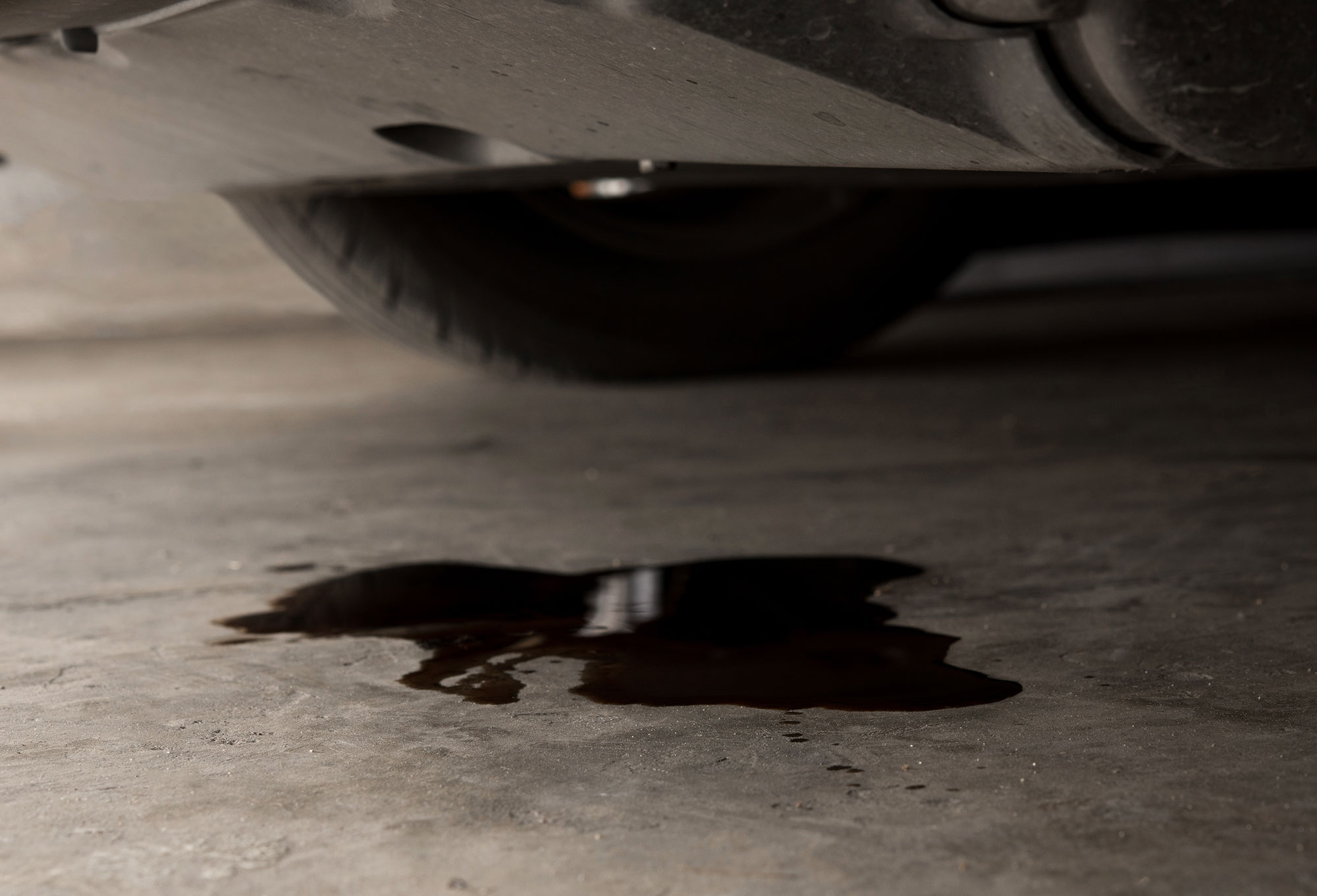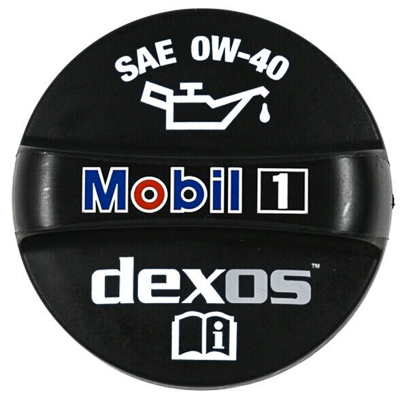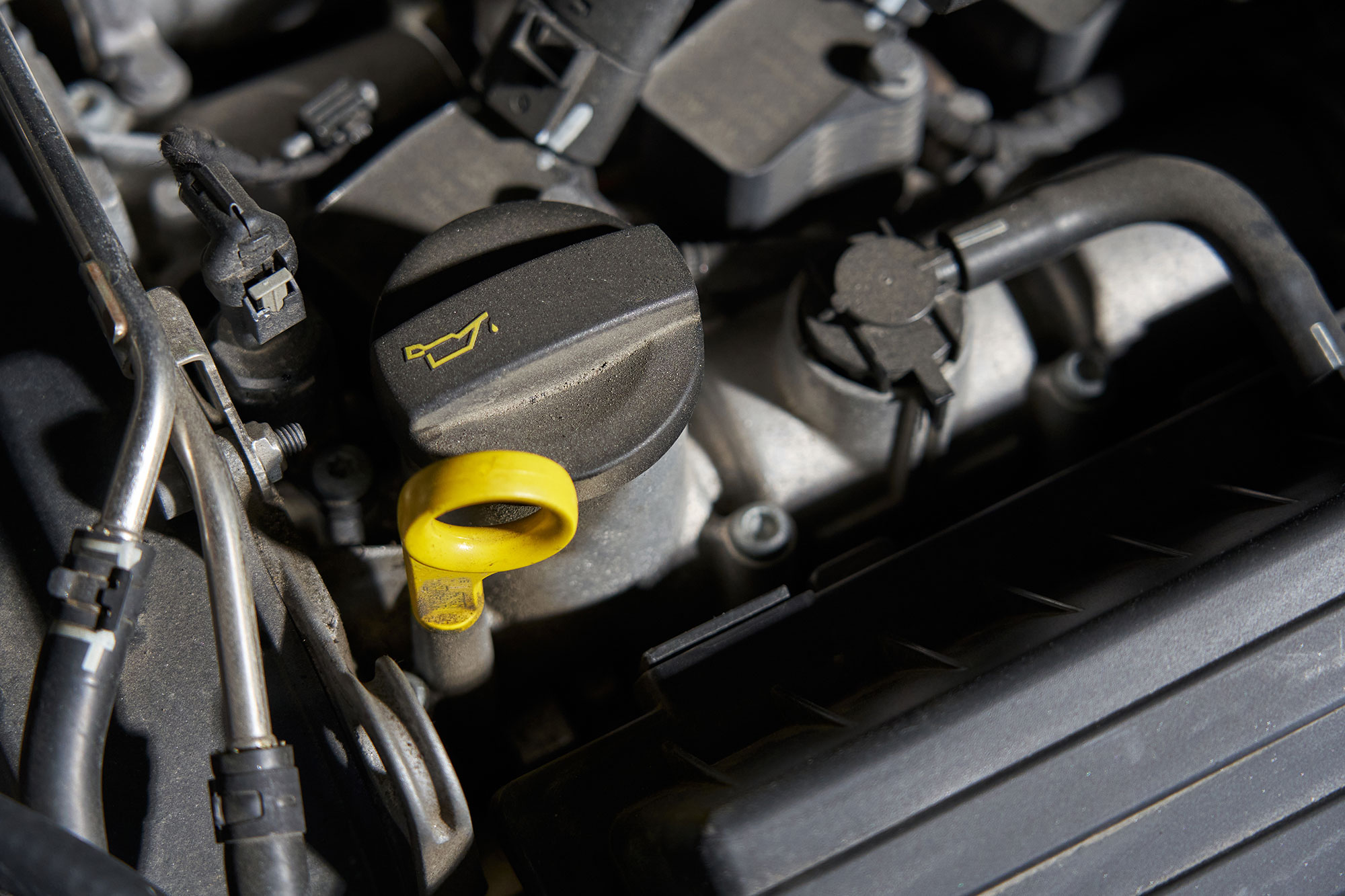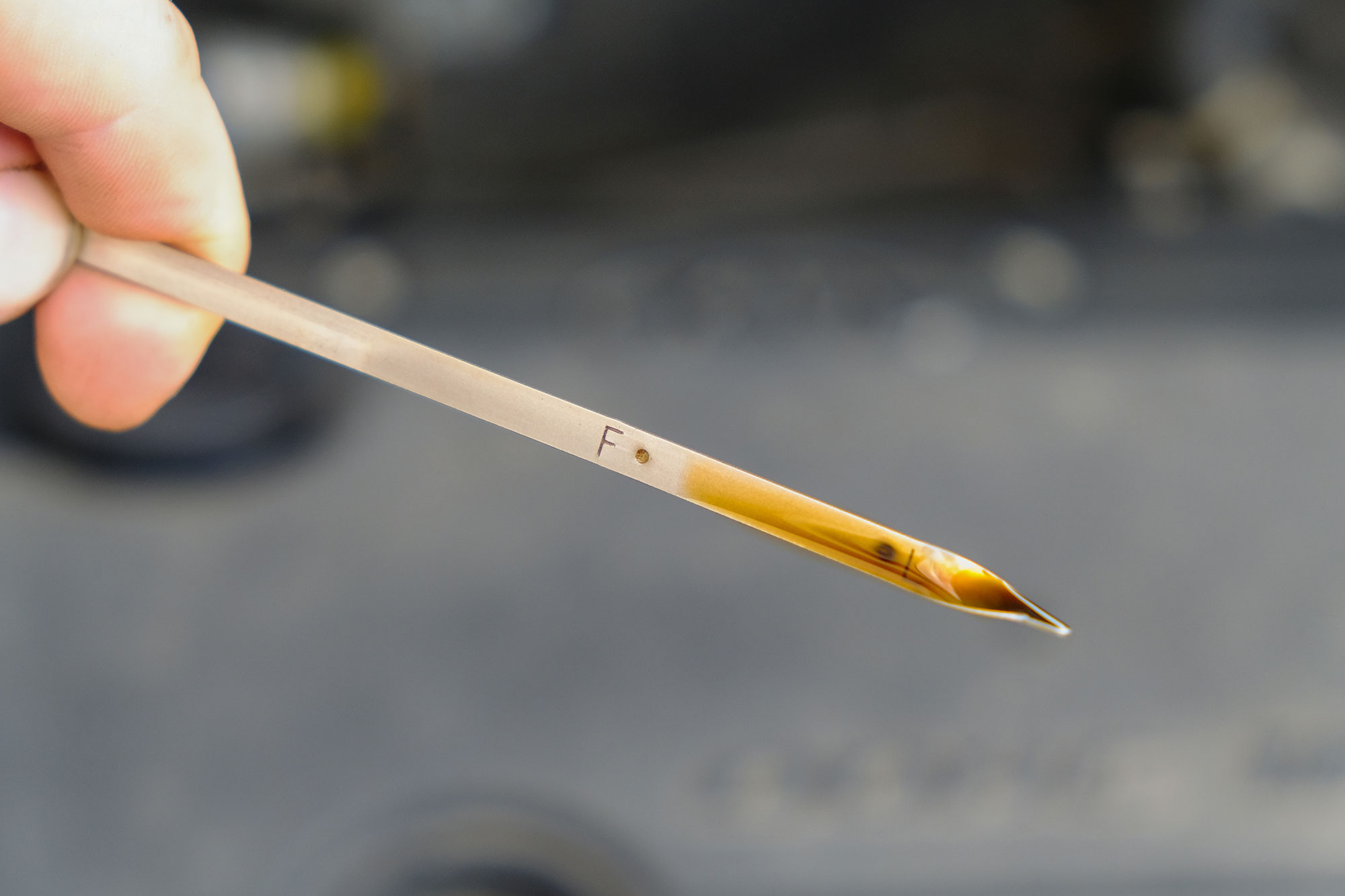Contents
Signs Your Vehicle Needs an Oil Change
It’s normal for all vehicle engines to consume some amount of motor oil. Some engines use up a small amount over time, while others burn off more or leak oil, which leaves a telltale sign of an oil puddle on your garage floor.
For more info, read these:
It’s a good habit to manually check your oil level regularly between oil changes, at least monthly and always before a long trip. Motor oil only lasts about six months before it needs to be changed. It should be changed whether you have been driving a lot or your car has been idle for an extended period.

That small puddle of oil can mean big trouble. Checking your engine oil can prevent engine damage.
Many newer vehicles have a built-in electronic oil sensor in the form of an oil gauge or dashboard warning light that illuminates when your motor oil approaches a minimum safe level. Some newer vehicles have an electronic oil sensing system and are not even equipped with a traditional oil dipstick for a manual inspection.
Shop now for motor oilPrepare to Check Your Engine Oil

This oil cap lists the manufacturers recommended type and viscosity.
Checking your oil level is easy with some basic preparation. Consult your vehicle’s owner’s manual to find the oil filler cap and dipstick locations. Always follow the manufacturer’s recommendations for motor oil type, viscosity and grade.
Read: What’s the Best Oil for Your Vehicle?
Park your vehicle on a flat, level surface, turn the engine off, and wait at least 10 minutes. This will allow the oil to drain from the engine into the oil pan for a more accurate oil level reading. In the meantime, find a clean cloth or paper towel and a funnel for adding oil.

Oil dipstick measuring marks vary by automaker and engine.
The oil dipstick is marked near the bottom to indicate the proper oil level. It could be with two pinholes, minimum and maximum lines, the letters H and L (high and low), or something as simple as a scored crosshatched area. Your owner’s manual should have detailed information about the markings and how much oil to add if needed.
Open and secure the hood and find the oil dipstick and oil filler cap. Dipsticks and oil filler caps often have a yellow or orange or black handle with an oil can symbol. If unsure, consult the owner’s manual. Take note: Automatic transmissions also have fluid level dipsticks, which could be mistaken for an engine oil location. Pouring motor oil into the wrong place can wreck havoc.

A yellow-handled dipstick and motor oil filler cap with the oil can symbol.
Steps to Check Your Engine Oil Level
Now that you’re prepared, follow these easy steps to check your engine’s oil level.
- Pull the dipstick out of the engine as if removing a sword from its sheath. Wipe the dipstick clean so you can clearly see the level measuring marks.
- Put the clean dipstick back into the engine ensuring it goes all the way into the sheath.
- Remove the dipstick and turn it horizontally. Observe and note the oil level at the measuring marks.
- Clean the dipstick with the cloth and take note of the oil color and odor. Put the dipstick back into the engine until it is fully seated.
- Add the recommended amount of oil if the level was at or below the low or minimum mark on the dipstick. Do not overfill.

The dipstick should have oil in between the minimum and maximum holes, dots, lines, or letters. This engine does not need oil.
If you added oil, park on level ground, wait 10 minutes for the oil to completely drain into the oil pan, and recheck the oil level after running the vehicle long enough to warm it to normal operating temperature. Overfilling is as bad for your engine as operating your vehicle with an insufficient amount of oil. It can cause severe damage.
Understanding Oil Color and Odor
Checking your oil level also reveals the oil condition. Look for these signs:
- Clean, acceptable oil is a clear, translucent amber color.
- Dirty oil is black and on the gritty side, and usually thicker.
- If the oil is a dark black color, smells like gasoline or has a burnt odor, you need a complete oil and filter change.
There are telltale signs that indicate that your vehicle’s engine has been seriously damaged due to lack of lubrication. Initial damage may not be exposed until engine parts wear or fail. Therefore, it is wise to examine the engine oil for small metal fragments.

Starvation from low oil levels or dirty oil can quickly destroy engine parts like this connecting rod bearing.
Other signs of engine damage include:
- Odd and unnatural noises, like metal grinding, a knocking sound, or a banging, clunking, or rattling. Immediately park the vehicle and stop the engine to prevent the engine from further damage.
- The smell of burnt oil or white smoke emanating from under the hood. This could indicate an oil leak and risk of an engine fire. Again, immediately stop the vehicle and turn the engine off.
- Temperature gauge or warning light illuminates. This is a clear indication of a significant issue under the hood. Immediately pull over to prevent any further damage.





